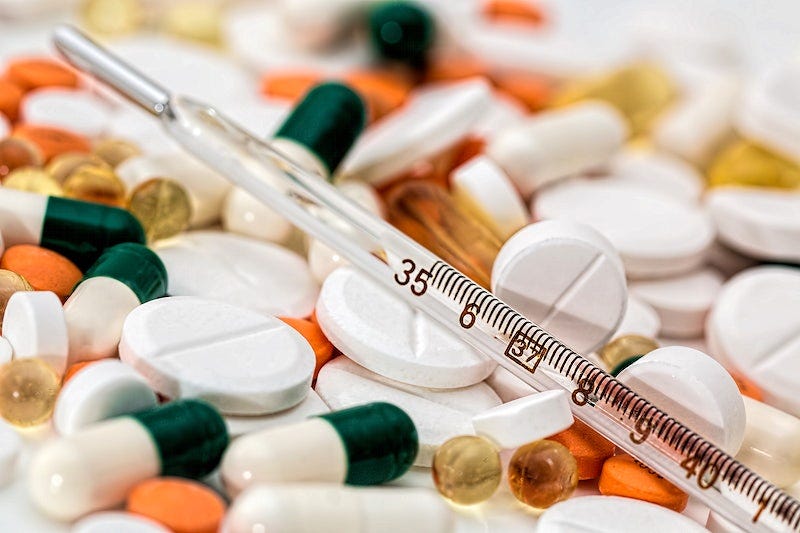Hope in a Box of Medicine
Every pill, every syrup bottle, and every injection produced in Pakistan is now telling a story—a story of growth, innovation, and transformation. In the past year, the Pakistani pharmaceutical industry has recorded an astonishing 52% increase in exports, marking one of its most significant achievements in recent times.
But behind this spike in numbers lies something deeper: confidence in a system that’s finally working, and hope for a healthcare infrastructure that’s beginning to feel more human.
From Crisis to Confidence: A Year of Change
Just a year ago, the pharmaceutical industry was surrounded by uncertainty. Prices were volatile, production was inconsistent, and regulatory hurdles slowed everything down. But when the government chose to deregulate key areas of the sector, everything began to shift.
Now, with the Pakistani Pharmaceutical Manufacturers Association (PPMA) confirming the 52% export growth since July 2024, it’s clear that the decision to ease state control wasn’t just good policy—it was a catalyst for transformation.
“We were stuck. Now, we’re building. Deregulation gave us the breathing room we needed,” shared a senior executive at a Karachi-based pharma firm.
A Sector That’s 90% Homegrown
One of the most underappreciated facts about Pakistan’s healthcare system is that 90% of all medicines sold in the country are made domestically. This not only creates jobs but ensures faster availability and affordability of essential treatments.
And now, the world is taking notice. Countries in Africa, Central Asia, and even parts of the Middle East are beginning to import Pakistani pharmaceuticals. From antibiotics to painkillers, and even complex generics, “Made in Pakistan” is gaining recognition for quality and cost-efficiency.
When Policy Meets Purpose
During a recent meeting between PPMA and Federal Health Minister Mustafa Kamal, industry leaders shared not just numbers but also their aspirations. Kamal, known for his empathetic leadership style, listened closely.
“There will never be a day when the government alone can treat every citizen,” Kamal admitted candidly. “But we can work together—state, private sector, and community—to ensure no one is left behind.”
Kamal’s approach is simple yet powerful: use technology to scale access and support local manufacturers to reduce dependency on imports.
The Rise of Telemedicine: Reaching the Unreachable
Pakistan’s population is now more connected than ever before. Over 80% of people have access to smartphones or mobile networks. Recognizing this, Kamal has been pushing for a telemedicine revolution.
Imagine a mother in Tharparkar consulting a specialist in Lahore through a mobile app. Or a heart patient in Skardu receiving prescription refills without leaving home. This is not a fantasy anymore—it’s becoming reality.
“We are working on a nationwide plan where telemedicine becomes the first step of diagnosis,” said Kamal. “This will reduce pressure on hospitals and bring healthcare to people where they are.”
And here’s where the pharma industry fits in—by powering these digital consultations with real medicines delivered to doorsteps.
Digital Medical Records: NADRA Steps In
Another big leap? The integration of NADRA ID numbers with medical records. Soon, every Pakistani will have a digitized health profile linked to their national identity, making it easier to track treatments, avoid duplications, and reduce medical fraud.
This system will not only improve diagnostics but also help health planners and policymakers understand disease patterns in real-time—especially in rural areas where data has long been a black hole.
Fighting Fake Medicines with Tech
There’s a dark side to every medicine bottle too—the risk of counterfeit drugs. Fake medicines kill, and they also damage the reputation of genuine manufacturers.
To fight this, the government is now promoting QR-code labeling on all pharmaceuticals. With a simple scan, anyone—from a pharmacist to a patient—can check whether the medicine is authentic.
“This technology gives us a fighting chance,” said one quality assurance officer from Lahore. “We’re no longer helpless.”
The pharmaceutical sector has welcomed this initiative, seeing it as a way to clean up the market and rebuild consumer trust.
The Human Side of the Numbers
The 52% export increase is exciting, but what’s more inspiring is what this means for people.
- A cancer patient in Nigeria now has access to affordable chemotherapy made in Pakistan.
- A pharmacist in rural Balochistan is no longer facing shortages.
- A new graduate in Sialkot just landed their first job in a pharma packaging plant.
These are the real-life impacts of policies that work and industries that grow. The ripple effect of a stronger pharmaceutical sector touches healthcare, employment, innovation, and foreign exchange.
What’s Next: Doorstep Delivery of Doctors and Drugs
In what may sound like science fiction, Minister Kamal revealed a plan to bring doctors and medicines directly to people’s homes. Combining teleconsultation, mobile healthcare vans, and smart logistics, this initiative could redefine how healthcare is delivered in Pakistan.
It’s bold, it’s ambitious, and it’s rooted in a deep belief that no one should suffer because they live too far from a hospital.
With pharmaceutical companies now stepping up to support this vision, Pakistan might just become a global case study in grassroots healthcare innovation.
Final Thoughts: Healing an Industry, Healing a Nation
Pakistan’s pharmaceutical industry is no longer just about pills and packaging. It’s about possibilities. It’s about how an industry once plagued by bureaucracy, shortages, and mistrust is now finding its rhythm.
Through smart deregulation, public-private collaboration, digital adoption, and global outreach, this sector is writing a new story—one that doesn’t just count numbers, but counts lives changed.
For once, we’re not just exporting products. We’re exporting trust, quality, and hope.



